#dalis
Explore tagged Tumblr posts
Text

L’ Amour de Pierrot, 1920 by Salvador Dalí
#art#surrealism#surreal#surealart#surealism#surealist#dark art#dark and moody#darkcore#dark illustration#gothcore#goth aesthetic#gothic#goth#dark fantasy#dark aesthetic#dark academia#skull#skull art#skulls#painting#oil painting#oil on canvas#oil paint#salvador dali#spanish#spain#x
15K notes
·
View notes
Text
Happy Public Domain Day 2025 to all who celebrate

If you'd like an essay-formatted version of this post to read or share, here's a link to it on pluralistic.net, my surveillance-free, ad-free, tracker-free blog:
https://pluralistic.net/2024/12/17/dastar-dly-deeds/#roast-in-piss-sonny-bono

In 1976, Congress set fire to the country's libraries; in 1998, they did it again. Today, in 2024, the flames have died down, and out of the ashes a new public domain is growing. Happy Public Domain Day 2025 to all who celebrate!
For most of US history, copyright was something you had to ask for. To copyright a work, you'd send a copy to the Library of Congress and they'd issue you a copyright. Not only did that let you display a copyright mark on your work – so people would know they weren't allowed to copy it without your permission – but if anyone wanted to figure out who to ask in order to get permission to copy or adapt a work, they could just go look up the paperwork at the LoC.
In 1976, Congress amended the Copyright Act to eliminate the "formality" of copyright registration. Now, all creative works of human authorship were copyrighted "at the moment of fixation" – the instant you drew, typed, wrote, filmed, or recorded them. From a toddler's nursery-school finger-painting to a graffiti mural on a subway car, every creative act suddenly became an article of property.
But whose property? That was on you to figure out, before you could copy, publish, perform, or preserve the work, because without registration, permissions had to start with a scavenger hunt for the person who could grant it. Congress simultaneously enacted a massive expansion of property rights, while abolishing the title registry that spelled out who owned what. As though this wasn't enough, Congress reached back in time and plopped an extra 20 years' onto the copyrights of existing works, even ones whose authors were unknown and unlocatable.
For the next 20 years, creative workers, archivists, educators and fans struggled in the face of this regime of unknowable property rights. After decades of well-documented problems, Congress acted again: they made it worse.
In 1998, Congress passed the Sonny Bono Copyright Act, AKA the Mickey Mouse Preservation Act, AKA the Copyright Term Extension Act. The 1998 Act tacked another 20 years onto copyright terms, but not just for works that were still in copyright. At the insistence of Disney, Congress actually yanked works out of the public domain – works that had been anthologized, adapted and re-issued – and put them back into copyright for two more decades. Copyright stretched to the century-plus "life plus 70 years" term. Nothing entered the public domain for the next 20 years.
So many of my comrades in the fight for the public domain were certain that this would happen again in 2018. In 2010, e-book inventor and Project Gutenberg founder Michael S Hart and I got into a friendly email argument because he was positive that in 2018, Congress would set fire to the public domain again. When I insisted that there was no way this could happen given the public bitterness over the 1998 Act, he told me I was being naive, but said he hoped that I was right.
Michael didn't live to see it, but in 2019, the public domain opened again. It was an incredible day:
https://archive.org/details/ClosingKeynoteForGrandReopeningOfThePublicDomainCoryDoctorowAtInternetArchive
No one has done a better job of chronicling the fortunes of our fragile, beautiful, bounteous public domain than Jennifer Jenkins and James Boyle of Duke University's Center for the Study of the Public Domain. Every year from 2010-2019, Boyle and Jenkins chronicled the works that weren't entering the public domain because of the 1998 Act, making sure we knew what had been stolen from our cultural commons. In so many cases, these works disappeared before their copyrights expired, for example, the majority of silent films are lost forever.
Then, in 2019, Jenkins and Boyle got to start cataloging the works that were entering the public domain, most of them from 1923 (copyright is complicated, so not everything that entered the public domain in 2019 was from that year):
https://web.law.duke.edu/cspd/publicdomainday/2019/
Every year since, they've celebrated a new bumper crop. Last year, we got Mickey Mouse!
https://pluralistic.net/2023/12/15/mouse-liberation-front/#free-mickey
In addition to numerous other works – by Woolf, Hemingway, Doyle, Christie, Proust, Hesse, Milne, DuBois, Frost, Chaplin, Escher, and more:
https://pluralistic.net/2023/12/20/em-oh-you-ess-ee/#sexytimes
Now, 2024 was a fantastic year for the public domain, but – as you'll see in the 2025 edition of the Public Domain Day post – 2025 is even better:
https://web.law.duke.edu/cspd/publicdomainday/2025/
So what's entering the public domain this year? Well, for one thing, there's more of the stuff from last year, which makes sense: if Hemingway's first books entered the PD last year, then this year, we'll the books he wrote next (and this will continue every year until we catch up with Hemingway's tragic death).
There are some big hits from our returning champions, like Woolf's To the Lighthouse and A Farewell to Arms from Hemingway. Jenkins and Boyle call particular attention to one book: Faulkner's The Sound and the Fury, its title taken from a public domain work by Shakespeare. As they write, Faulkner spoke eloquently about the nature of posterity and culture:
[Humanity] is immortal, not because he alone among creatures has an inexhaustible voice, but because he has a soul, a spirit capable of compassion and sacrifice and endurance…The poet’s voice need not merely be the record of man, it can be one of the props, the pillars to help him endure and prevail.
The main attraction on last year's Public Domain Day was the entry of Steamboat Willie – the first Mickey Mouse cartoon – into the public domain. This year, we're getting a dozen new Mickey cartoons, including the first Mickey talkie:
https://en.wikipedia.org/wiki/Mickey_Mouse_(film_series)#1929
Those 12 shorts represent a kind of creative explosion for the Disney Studios. Those early Mickey cartoons were, each and every one, a hybrid of new copyrighted works and the public domain. The backbone of each Mickey short was a beloved, public domain song, with Mickey's motion synched to the beat (animators came to call this "mickey mousing"). In 1929, there was a huge crop of public domain music that anyone could use this way:
Blue Danube, Pop Goes the Weasel, Yankee Doodle, Here We Go Round the Mulberry Bush, Ach Du Lieber Augustin, Listen to the Mocking Bird, A-Hunting We Will Go, Dixie, The Girl I Left Behind Me, a tune known as the snake charmer song, Coming Thru the Rye, Mary Had a Little Lamb, Auld Lang Syne, Aloha ‘Oe, Turkey in the Straw, My Bonnie Lies Over the Ocean, Habanera and Toreador Song from Carmen, Lizst’s Hungarian Rhapsody No. 2, and Goodnight, Ladies.
These were recent compositions, songs that were written and popularized in the lifetimes of the parents and grandparents who took their kids to the movies to see Mickey shorts like "The Barn Dance," "The Opry House" and "The Jazz Fool." The ability to plunder this music at will was key to the success of Mickey Mouse and Disney. Think of all the Mickeys and Disneys we've lost by locking up the public domain for the past half-century!
This year, we're getting some outstanding new old music for our public domain. The complexities of copyright terms mean that compositions from 1929 are entering the public domain, but we're only getting recordings from 1924. 1924's outstanding recordings include:
George Gershwin performing Rhapsody in Blue, Jelly Roll Morton playing Shreveport Stomp, and an early recording from contralto and civil rights icon Marian Anderson, who is famous for her 1939 performance to an integrated audience of over 75,000 people at the Lincoln Memorial. Anderson’s 1924 recording is of the spiritual Nobody Knows the Trouble I’ve Seen.
While the compositions include Singin' in the Rain, Ain't Misbehavin', An American in Paris, Bolero, (What Did I Do to Be So) Black and Blue, Tiptoe Through the Tulips, Happy Days Are Here Again, What Is This Thing Called, Love?, Am I Blue? and many, many more.
On the art front, we're getting Salvador Dali's earliest surrealist masterpieces, like Illumined Pleasures, The Accommodations of Desire, and The Great Masturbator. Dali's contemporaries are not so lucky: after a century, the early history of the works of Magritte are so muddy that it's impossible to say whether they are in or out of copyright.
But there's plenty of art with clearer provenance that we can welcome into the public domain this year, most notably, Popeye and Tintin. As the first Popeye and Tintin comics go PD, so too do those characters.
The idea that a fictional character can have a copyright separate from the stories they appear in is relatively new, and it's weird and very stupid. Courts have found that the Batmobile is a copyrightable character (Batman won't enter the public domain until 2035).
Copyright for characters is such a muddy, gross, weird idea. The clearest example of how stupid this gets comes from Sherlock Holmes, whose canon spans many years. The Doyle estate – a rent-seeking copyright troll – claimed that Holmes wouldn't enter the public domain until every Holmes story was in the public domain (that's this year, incidentally!).
This didn't fly, so their next gambit was to claim copyright over those aspects of Holmes's character that were developed later in the stories. For example, they claimed that Holmes didn't show compassion until the later stories, and, on that basis, sued the creators of the Enola Holmes TV show for depicting a gender-swapped Sherlock who wasn't a total dick:
https://www.theguardian.com/books/2020/dec/22/lawsuit-copyright-warmer-sherlock-holmes-dismissed-enola-holmes
As the Enola lawyers pointed out in their briefs, this was tantamount to a copyright over emotions: "Copyright law does not allow the ownership of generic concepts like warmth, kindness, empathy, or respect, even as expressed by a public domain character – which, of course, belongs to the public, not plaintiff."
When Mickey entered the public domain last year, Jenkins did an excellent deep dive into which aspects of Mickey's character and design emerged when:
https://web.law.duke.edu/cspd/mickey/
Jenkins uses this year's entry of Tintin and Popeye into the public domain to further explore the subject of proprietary characters.
Even though copyright extends to characters, it only covers the "copyrightable" parts of those characters. As the Enola lawyers wrote, the generic character traits (their age, emotional vibe, etc) are not protected. Neither is anything "trivial" or "minuscule" – for example, if a cartoonist makes a minor alteration to the way a character's pupils or eyes are drawn, that's a minor detail, not a copyrightable element.
The biggest impediment to using public domain characters isn't copyright, it's trademark. Trademark is very different from copyright: foundationally, trademark is the right to protect your customers from being deceived by your competitors. Coke can use trademark to stop Pepsi from selling its sugary drinks in Coke cans – not because it owns the word "Coke" or the Coke logo, but because it has been deputized to protect Coke drinkers from being tricked into buying not-Coke, thinking that they're getting the true Black Waters of American Imperialism.
Companies claim trademarks over cartoon characters all the time, and license those trademarks on food, clothing, toys, and more (remember Popeye candy cigarettes?).
Indeed, Hearst Holdings claims a trademark over Popeye in many traditional categories, like cartoons, amusement parks, ads and clothes. They're also in the midst of applying for a Popeye NFT trademark (lol).
Does that mean you can't use Popeye in any of those ways? Nope! All you need to do is prominently mention that your use of Popeye is unofficial, not associated with Hearst, and dispel any chance of confusion. A unanimous Supreme Court decision (in Dastar) affirm your right to do so. You can also use Popeye in the title of your unauthorized Popeye comic, thanks to a case called Rogers v Grimaldi.
This all applies to Tintin, too – a big deal, given that Tintin is managed by a notorious copyright bully who delights in cruelly terrorizing fan artists. Tintin is joined in the public domain by Buck Rogers, another old-timey character whose owners are scumbag rent-seekers.
Congress buried the public domain alive in 1976, and dumped a load of gravel over its grave in 1998, but miraculously, we've managed to exhume the PD, and it has been revived and is showing signs of rude health.
2024 saw the blockbuster film adaptation of Wicked, based on the public domain Oz books. It also saw the publication of James, a celebrated retelling of Twain's Huck Finn from the perspective of Huck's enslaved sidekick.
This is completely normal. It's how art was made since time immemorial. The 40 year experiment in life without a public domain is at an end, and not a minute too soon.
You can piece together a complete-as-possible list of 2025's public domain (including the Marx Brothers' Cocoanuts, Disney's Skeleton Dance, and Del Ruth's Gold Diggers of Broadway) here:
https://onlinebooks.library.upenn.edu/cce/
#jennifer jenkins#duke center for the public domain#public domain day#trademark#tintin#popeye#copyfight#copyright#roast in piss sonny bono#james boyle#marx brothers#mickey mouse#ravel#bolero#faulkner#hemingway#virginia woolf#steinbeck#skeleton dance#gold diggers of broadway#dali#wicked
4K notes
·
View notes
Text

you're perfect.
#steven universe#su#steven universe future#amethyst#pearl#pearlmethyst#comic#alt text#image described#my art#daly art#they're defects together
6K notes
·
View notes
Text
Copy Right and Public Domain in 2025!
It's January 1st 2025 which means it's my favorite unsung holiday! Public Domain Day! This is the day once a year when, in the US, copyrights expire and things enter the public domain, meaning they belong to everyone! even you, Steve!
American copyright for books, movies, art work, and musical compositions (but not recordings, more on that later) runs for 95 years (way too long!) so today works published in 1929 join us in the public domain.
So whats free? so glad you asked.
Popeye the Sailor Man

Many people assume Popeye originated as a cartoon character but thats not true, he comes from a comic strip. The strip was called Thimble Theatre and Popeye was something of a late addition. Thimble Theatre was first published in 1919, so Popeye's girlfriend Olive Oyl has been in the public domain since before the big 20 year copyright freeze of 1998-2019. Popeye first appeared as a minor character 10 years into the strip's run but was so popular he soon took over and the strip would be renamed Popeye less than 5 years later. Now as always whats public is only what appears in 1929, later developments, remain copyrighted. Such as, while Popeye always had super strength its not till 1932 his superpowers were tied to eating spinach, and Olive Oyl originally had a different boyfriend named Ham Gravy, who she dumped for Popeye when he became the main character. It looks like Popeye is following tradition for famous now public domain characters and getting a quicky horror movie this year.
Tintin!

This is personally very exciting as someone who grew up with the Belgian boy detective. Like Popeye I expect a lot of people don't know that Tintin started off as a weekly comic strip. Indeed Tintin appeared as a part of a weekly youth supplement in the Catholic newspaper The Twentieth Century. Any ways, Tintin was first published in there in January 1929, and soon would start what would become the first Tintin story, Tintin in the Land of the Soviets. Now only part of Tintin in the Land of the Soviets was published in 1929, the story line wrapped up in May 1930, so only those 1929 stories and what appears in them is free and clear and Tintin was published in black and white not color. Tintin's author Hergé had no idea what he was doing and was really learning on the job so In The Land of the Soviets is generally seen as his weakest outing and the only one he never opted to redraw in later years. Even so it's nice to see the character free in the world. No word on if Tintin will star in a horror movie.
Buck Rogers (but not really)

The original futuristic space man was published, again a comic strip, in 1929 which means he should enter the public domain today, but he won't. That's because he already is public domain! Before the Copyright Act of 1976 copyright was 28 years with the option to renew for another 28 years. The copyright on the original comic strips was not renewed so ran out at the end of 28 years, 1958. So Buck Rogers has been free and clear for close to 70 years now, whatever you hear about him today.
What else?
Famously last year Mickey Mouse entered the public domain, but all the entered public domain was one (maybe two) animated short, Steamboat Willie. Well this year a dozen Mickey Mouse animated shorts enter the public domain, including the first time Mickey has his iconic white gloves, and the first time Mickey speaks (the first thing Mickey Mouse ever says, voiced by Walt Disney himself, is "Hot dogs! Hot dogs!" in case you were wondering) This will give creators much more to work with if they want to use Mickey in their works which is exciting.
Speaking of Walt Disney, The Skeleton Dance is entering public domain, you likely don't know the title but I suspect you've seen at least part of it at some point

so look for this showing up on TVs in the backgrounds of films and TV shows in the next year or so
Books
The iconic novels of World War I, Ernest Hemingway's A Farewell to Arms and Erich Maria Remarque's All Quiet on the Western Front enter public domain. In fact All Quiet on the Western Front entered public domain last year, but only in the original German, the 1929 translation by Arthur Wesley Wheen is whats entered the public domain now. John Steinbeck's first novel, Cup of Gold, William Faulkner's The Sound and the Fury, Virginia Woolf's A Room of One's Own, and Agatha Christie's Seven Dials Mystery (always get an Agatha Christie novel on this list for the rest of our lives). Dashiell Hammett published both Red Harvest and The Maltese Falcon, later made into one of the greatest films of all time, in 1929. Future children's book author E. B. White (who's go on to write Charlotte's Web and Stuart Little) and future New Yorker cartoonist and humorist James Thurber teamed up to write the delightfully titled Is Sex Necessary? Or, Why You Feel the Way You Do a book of spoof essays making fun of popular books on Freudian sexual theories at the time. The Roman Hat Mystery the first of the long running Ellery Queen mysteries was published, Queen would keep publishing mysteries into the 1970s (and Ellery Queen was a pen name for two people). Richard Hughes' A High Wind in Jamaica and Oliver La Farge's Laughing Boy also came out in 1929 and are in the public domain now. There's much else but those are the highlights sorry if I missed your favorite 1929 novel.
Movies
Alfred Hitchcock and Cecil B. DeMille's first movies with sound, Blackmail and Dynamite respectively, came out in 1929. Marx Brothers' first feature film The Cocoanuts joins the public domain. Other comedy land marks are Harold Lloyd's first sound film, Welcome Danger and Buster Keaton's last silent film, Spite Marriage (which Keaton also directed). John Ford's first sound film, The Black Watch, which also is 21 year old John Wayne's first appearance in a film, as an uncredited extra, he worked in the art department. Hallelujah the first studio film to have an all black cast came out that year. Also worth noting is The Hollywood Revue of 1929 a singing and dancing review, one of the earliest and the movie that popularized the song Singin’ in the Rain, maybe the first time a movie made a song a hit.
Musical compositions
musical compositions, ie the lyrics and musical notations you might see on sheet music are governed by the 1976 Copyright Act, and music written in 1929 is public domain. Music recordings are governed by a whole different law (we'll get there). Songs written in 1929 include Singin’ in the Rain by Arthur Freed & Nacio Herb Brown, Ain’t Misbehavin’ and Black and Blue by the legendary Fats Waller, What Is This Thing Called Love? by Cole Porter, Tiptoe Through the Tulips by Alfred Dubin, You Were Meant for Me by Arthur Freed & Nacio Herb Brown, and also Happy Days Are Here Again by Jack Yellen which would become FDR's campaign theme song in 1932.
Art!
a number of pieces by Salvador Dalí including:
Illumined Pleasures

The Accommodations of Desire

The Great Masturbator
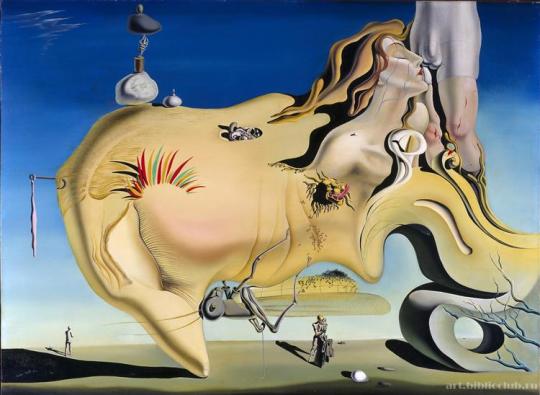
are entering the public domain as is René Magritte’s The Treachery of Images.
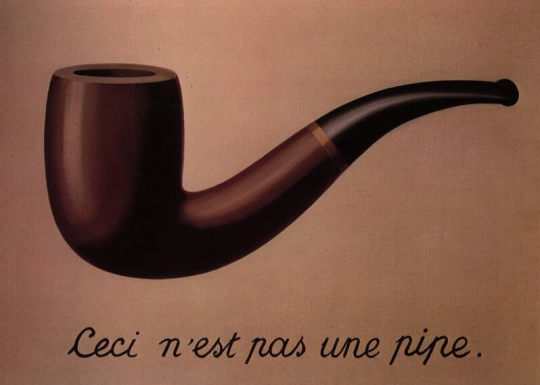
Art is hard because while movies and books are clearly "published" and put on sale, what counts as "published" for a piece of art? the law is not totally sure.
Musical Recordings
as I promised, we got here. Till 2017 there were no federal laws governing the copyright of music recordings before the 1970s, it was governed by a confusing patchwork of state laws and it was not totally clear what was or was not free and clear even from the very earliest recordings ever. Now the term of a music recording's copyright is set at 100 years (way too long) so music recorded in 1924 is now public domain such as. Nobody Knows the Trouble I’ve Seen by Marian Anderson, Everybody Loves My Baby (But My Baby Don’t Love Nobody But Me) by Louis Armstrong, California Here I Come by Al Jolson, Rhapsody in Blue by George Gershwin, Shreveport Stomp by Jelly Roll Morton, Mama’s Gone, Good Bye by Ray Miller, and It Had To Be You by Marion Harris. Now many recordings a lot less famous can finally be preserved and digitized to save them for the next 100 years. Many abandoned works are literally rotting away since without the copyright holder's permission digitizing a work isn't legal.
#Copyright#public domain#public domain day#Popeye#Tintin#the adventures of tintin#Mickey Mouse#Disney#buster keaton#the marx brothers#louis armstrong#cole porter#singin' in the rain#alfred hitchcock#salvador dali#Agatha Christie#Ernest Hemingway#virginia woolf#John Steinbeck#William Faulkner
3K notes
·
View notes
Text

'Dance of the Dandelion' by Salvador Dali, 1944
2K notes
·
View notes
Photo

Salvador Dalí - The Eye of Surrealist Time
3K notes
·
View notes
Text
Dali - Sailor Moon - Moonlight Densetsu 1992
"Moonlight Densetsu" ("Moonlight Legend") is a song that served as an opening theme for the anime series Sailor Moon. The song's original version was released in Japan on March 21, 1992, on a split single by Dali and Misae Takamatsu titled "Moonlight Densetsu / Heart Moving". It was a big hit and in 1995 it was certified Gold by the Recording Industry Association of Japan. Two different versions of this song were used for the anime. The first, performed by Dali and arranged by Daisuke Ikeda, was used for the duration of the first season and Sailor Moon R. The second, performed by Moon Lips and arranged by Yuuzou Hayashi was used for Sailor Moon S and Sailor Moon SuperS. The basic melody with severely altered lyrics was used for the theme song in several dubs around the world.
An online survey conducted in 2008 by Goo recognized it as the most popular song from an anime series for karaoke from 1991 to 2000. "Moonlight Densetsu" won first place in the Song category in Animage's 15th and 16th Anime Grand Prix. According to a poll conducted by Japanese music magazine CD&DL Data in 2016 about the most representative songs associated with the moon, the original version by Dali was ranked 4th by 6203 respondents aging from teens to thirties. In 2019, the original Dali version won the Performance Award of the Heisei Anisong Grand Prize among the anime theme songs from 1989 to 1999. "Moonlight Densetsu" was ranked 12th in Onegai! Ranking Series' derivative variety show "130,000 People Vote! Anime Song General Election" broadcast by TV Asahi on September 6, 2020.
"Moonlight Densetsu" received a total of 84,9% yes votes!
youtube
1K notes
·
View notes
Text

La maison du docteur Edwardes (Spellbound), Rhonda Fleming dans le film de Alfred Hitchcock, 1945. (décors de Salvador Dali)
#bizarre au havre#alfred hitchcock#movie#spellbound#surrealism#rhonda fleming#salvador dali#photography#film#la maison du docteur edwardes#surréalisme#photographie
2K notes
·
View notes
Text

Salvador Dali, Two Dancers, 1949
1K notes
·
View notes
Text
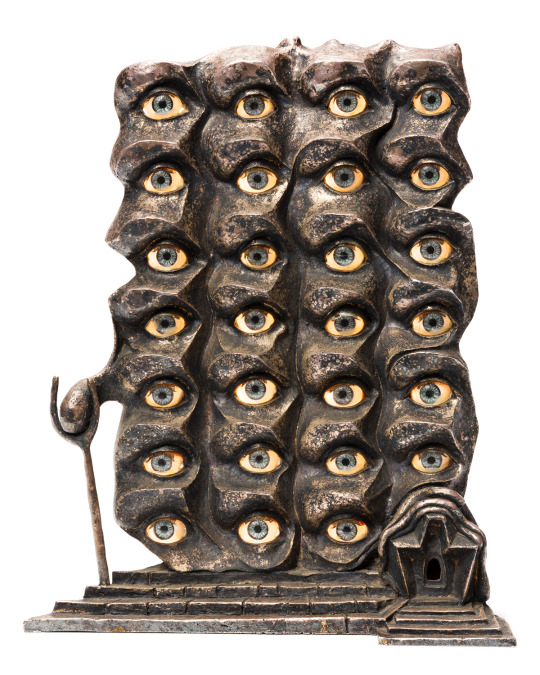
"THE SURREALISTIC EYES" SALVADOR DALÍ // 1980 [mixed media with bronze | 34 cm.]
#salvador dalí#salvador dali#surrealism#surreal#sculpture#mixed media#eyes#contemporary art#80s#spanish#art#u
3K notes
·
View notes
Text



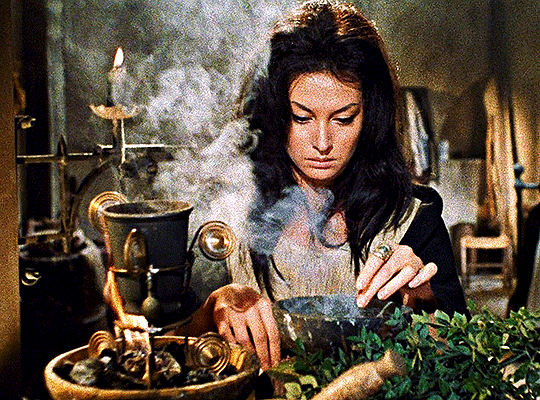
Fabienne Dali as Ruth Kill, Baby... Kill! (1966) dir. Mario Bava
#Kill Baby Kill#Kill Baby... Kill!#Fabienne Dali#Operazione paura#1960s#horror#gif#michi#filmedit#userlenny#userelissa#userbrittany#uservee#mikaeled#uservienna#userlenie#userteri#ritahayworrth#usercande
6K notes
·
View notes
Text






KATIE MCGRATH AS JULES DALY IN A PRINCESS FOR CHRISTMAS (2011)
#katie mcgrath#katiemcgrathedit#kmcgrathedit#jules daly#a princess for christmas#movieedit#filmedit#my edit
721 notes
·
View notes
Text
433 notes
·
View notes
Text
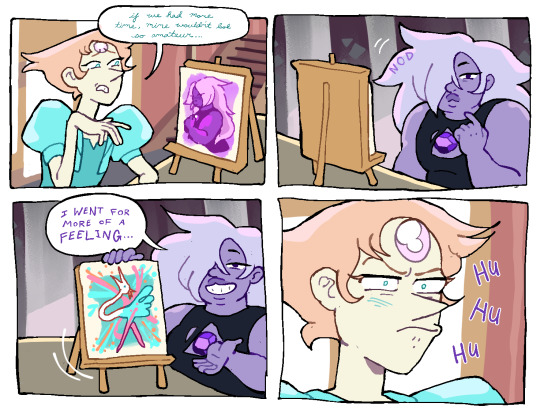
pearl and amethyst paint each other's portraits...
#steven universe#su#steven universe future#suf#pearl#amethyst#pearlmethyst#comic#image described#alt text#my art#daly art
5K notes
·
View notes
Text










His smile 🫠☺️🥰😘❤️🔥💕🫦
482 notes
·
View notes